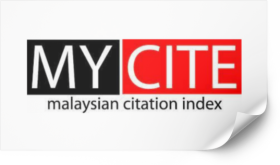Wettability Study of Chitosan Droplet on Surface-Modified PDMS for Microfluidics Application
Keywords:
Polydimethylsiloxane, Wettability Study, Chitosan Droplet, Microfluidics ApplicationAbstract
Polydimethylsiloxane (PDMS) is a common polymer used in microfluidics application due to its flexibility and ease in fabrication. Chitosan coated on the inner wall of photocatalytic microfluidic device works as a strong adsorbent in wastewater pollution remediation process. However, there was a problem with its native hydrophobicity of the polymer, which prevents the microchannel from having a high wettability surface property for a material coating. To modify the hydrophobic PDMS surface to hydrophilic characteristic, many researchers would use oxygen plasma technique which requires costly equipment in the treatment process. This current work uses a two-step chemical treatment, piranha solution and potassium hydroxide solution, to modify the hydrophobic native PDMS surface to hydrophilic surface-modified PDMS. In corresponding to the hydrophilicity analysis, the wettability of chitosan droplet on the surface-modified PDMS was studied by conducting sessile drop technique and compared the wettability of chitosan droplet on the surface-modified PDMS against the native PDMS. The chitosan pH value is a significant effect on its adsorption property. Thus, chitosan droplet at various pH value (pH 4.0, pH 4.5, pH 5.0, pH 5.5, and pH 6.0) had been used to test the wettability of the surface-modified PDMS. The contact angle of more than 90° is known to be hydrophobic, and contact angle less than 90°, is known to be hydrophilic. Results obtained the best wettability property was shown at 15 minutes of curing time (compared to treatment time of 1 minute, 5 minutes, 10 minutes, and 20 minutes). The surface-modified PDMS was proven to be hydrophilic, hence, showing it to be a great choice when chitosan is to be coated on the inner wall of the microchannel surface.
Downloads
Published
How to Cite
Issue
Section
License
Copyright (c) 2020 Progress in Energy and Environment

This work is licensed under a Creative Commons Attribution-NonCommercial 4.0 International License.








